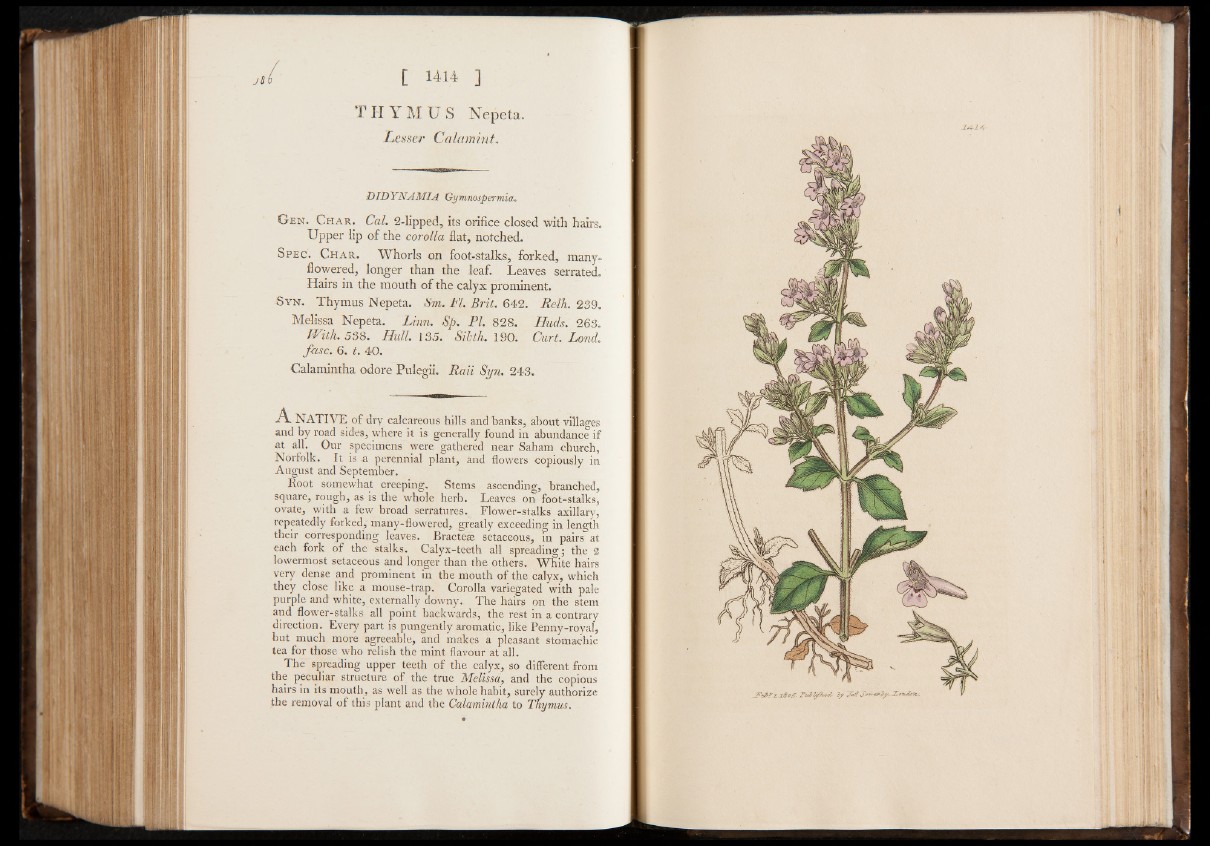
J l l t 1414 ]
T H Y M U S Nepeta.
Lesser Calamint.
DIDYNAMlA Gymnospermia.
Gen. Char. Cal. 2-lipped, its orifice closed with hairs.
Upper lip of the corolla flat, notched.
Spec. Char. Whorls on foot-stalks, forked, many-
flowered, longer than the leaf. Leaves serrated.
Hairs in the mouth of the calyx prominent.
S yn. Thymus Nepeta. Sm. FI. Brit. 642. Relh. 239.
Melissa Nepeta. Linn, Sp. PI. 828. Huds. 263.
With. 538. Hull. 135. Sibth. 190. Curt. Land,
fasc. 6. t. 40.
Calamintha odore Pulegii. Ran Syn. 243.
A NATIVE of dry calcareous hills and banks, about villages
and by road sides, where it is generally found in abundance if
at all. Our specimens were gathered near Saham church,
Norfolk. It is a perennial plant, and flowers copiously in
August and September.
Root somewhat creeping. Stems ascending, branched,
square, rough, as is the whole herb. Leaves on foot-stalks,
ovate, with a few broad serratures. Flower-stalks axillary,
repeatedly forked, many-flowered, greatly exceeding in length
their corresponding leaves. Brae teas setaceous, in pairs at
each fork of the stalks. Calyx-teeth all spreading; the 2
lowermost setaceous and longer than the others. White hairs
very dense and prominent in the mouth of the calyx, which
they dose like a mouse-trap. Corolla variegated with pale
purple and white, externally downy. The hairs on the stem
and flower-stalks all point backwards, the rest in a contrary
direction. Every part is pungently aromatic, like Penny-royal,
but much more agreeable, and makes a pleasant stomachic
tea for those who relish the mint flavour at all.
The spreading upper teeth of the calyx, so different from
the peculiar structure of the true Melissa, and the copious
hairs in its mouth, as well as the whole habit, surely authorize
the removal of this plant and the Calamintha to Thymus.